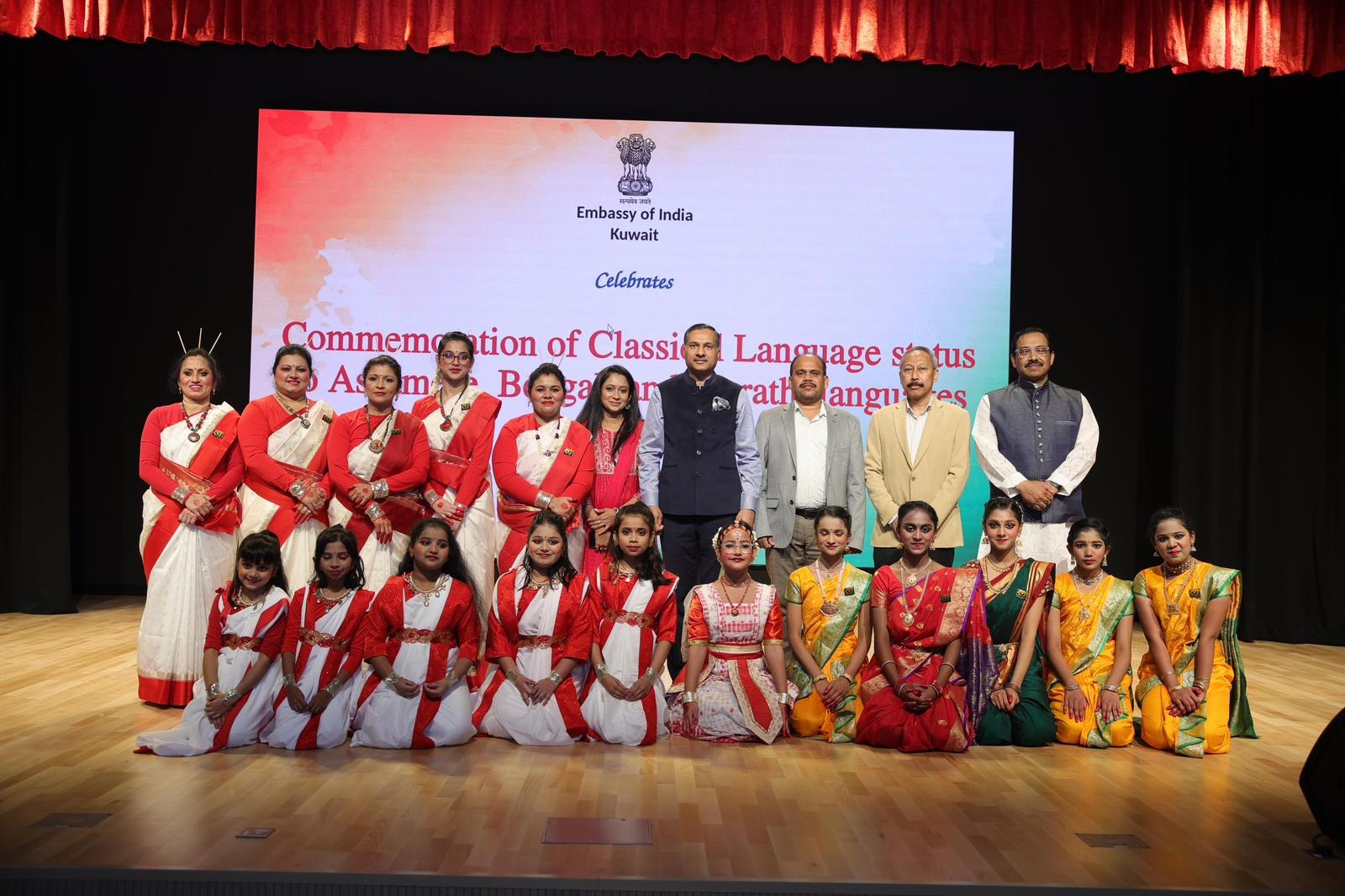the occasion of commemoration of Classical Language status to Marathi, Bengali and Assamese (26 October 2024)
Remarks by Ambassador of India on the occasion of
commemoration of Classical Language status to Marathi, Bengali and Assamese (26 October 2024)

Presidents of Maharashtra Mondal, Bengali Cultural Society and Assamese Association in Kuwait
Dear children
Friends from media
Ladies and Gentlemen
Namaskar, Good evening!
I appreciate your presence today at the Embassy to celebrate the conferment of Classical Language status by Government of India to 3 Indian languages, namely Marathi, Bengali and Assamese earlier this month. Two other languages Pali and Prakrit were also conferred the same status. The presence of Marathi, Bengali and Assamese members of the Indian community today is symbolic of the importance we attach to this significant development, particularly for the people from these regions and those who are conversant with these languages. The Classical Languages serve as a custodian of Bharat’s profound and ancient cultural heritage, embodying the essence of each community’s historical and cultural milestone.
2.As some of you may be aware, the Government of India decided to create a new category of languages as "Classical Languages" on 12th October 2004 by declaring Tamil as the Classical Language for the first time. After Tamil, 5 other languages have been accorded this status viz Sanskrit, Telugu, Kannada, Malyalam and Odia. And it is matter of great satisfaction that around 60-70% of the one million strong Indian community in Kuwait has these languages as their native language. A Linguistic Experts Committee (LEC) was constituted by the Ministry of Culture under Sahitya Akademi in Nov 2004 to examine the proposed languages for the status of Classical Language. Certain criteria were set for eligibility for the Classical language status which have been revised over a period time including recently by the Linguistic Experts committee:
(i)High antiquity of (its) is early texts/recorded history over a period of 1500- 2000 years.
(ii) A body of ancient literature/texts, which is considered a heritage by generations of speakers.
(iii) Knowledge texts, especially prose texts in addition to poetry, epigraphical and inscriptional evidence.
(iv) The Classical Languages and literature could be distinct from its current form or could be discontinuous with later forms of its offshoots.
3.The Government has not only declared these as Classical languages but also made an effective implementation strategy and targets. The Ministry of Education has taken various steps to promote Classical Languages. Three Central Universities were established in 2020 through an Act of Parliament for promotion of Sanskrit language. The Central Institute of Classical Tamil was set up to facilitate the translation of ancient Tamil texts, promote research and offer courses for University students and language scholars of Tamil. To further enhance the study and preservation of Classical Languages, the Centres for Excellence for studies in Classical Kannada, Telugu, Malayalam, and Odia were established under the auspices of the Central Institute of Indian Languages in Mysuru. In addition to these initiatives, several national and international awards have been instituted to recognize and encourage achievements in the field of Classical Languages. Benefits extended to Classical Languages by the Ministry of Education include National Awards for Classical Languages, Chairs in Universities, and Centers for promotion of Classical Languages.
4.What are the advantages of classical language status? It is not just a significant honour but has also several tangible results, including employment and educational opportunities and cultural preservation. It will create significant employment opportunities, particularly in academic and research fields. The preservation, documentation, and digitization of ancient texts of these languages will generate jobs in archiving, translation, publishing, and digital media. In so far as education is concerned, it may lead to establishment of research centres and educational programmes dedicated specifically to their study as well as support and scholarships for students pursuing studies in these languages. In terms of cultural preservation, it will encourage the documentation and preservation of ancient texts, making sure they are available for future generations. It also has a broader impact by acknowledging the linguistic diversity of India. Each of these languages carries and reflects their unique cultural narratives and historical importance. By elevating their status, the government wants to emphasize the need to preserve and promote these rich heritages.
5.I thank all three associations from Maharashtra, Bengal and Assam in joining and partnering with us to celebrate this important development. I also look forward to hearing what the representatives of the three associations have to say on this. We would also be having cultural performances of these 3 states and I thank all participants for putting together the cultural show.
Thank you!







